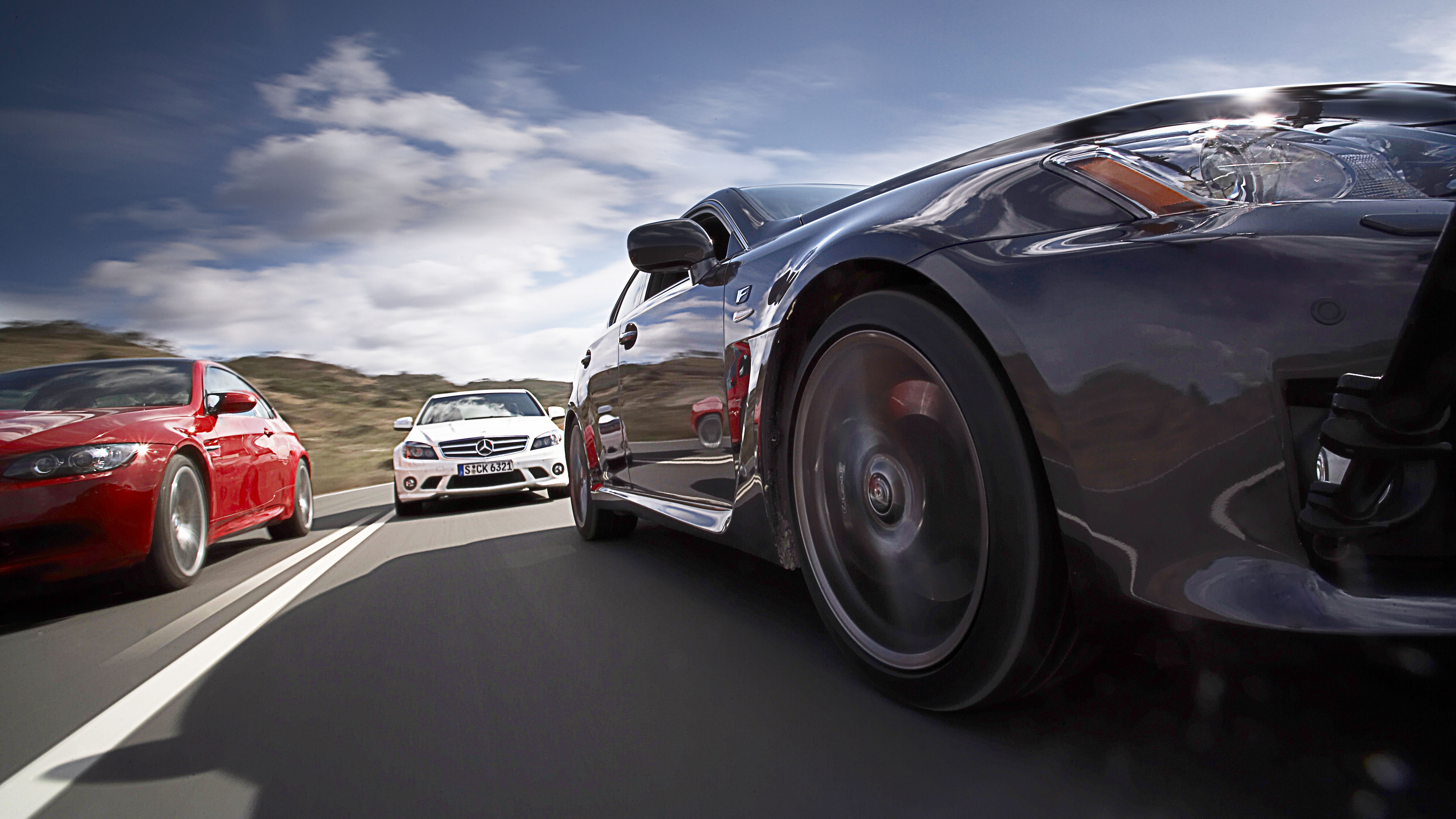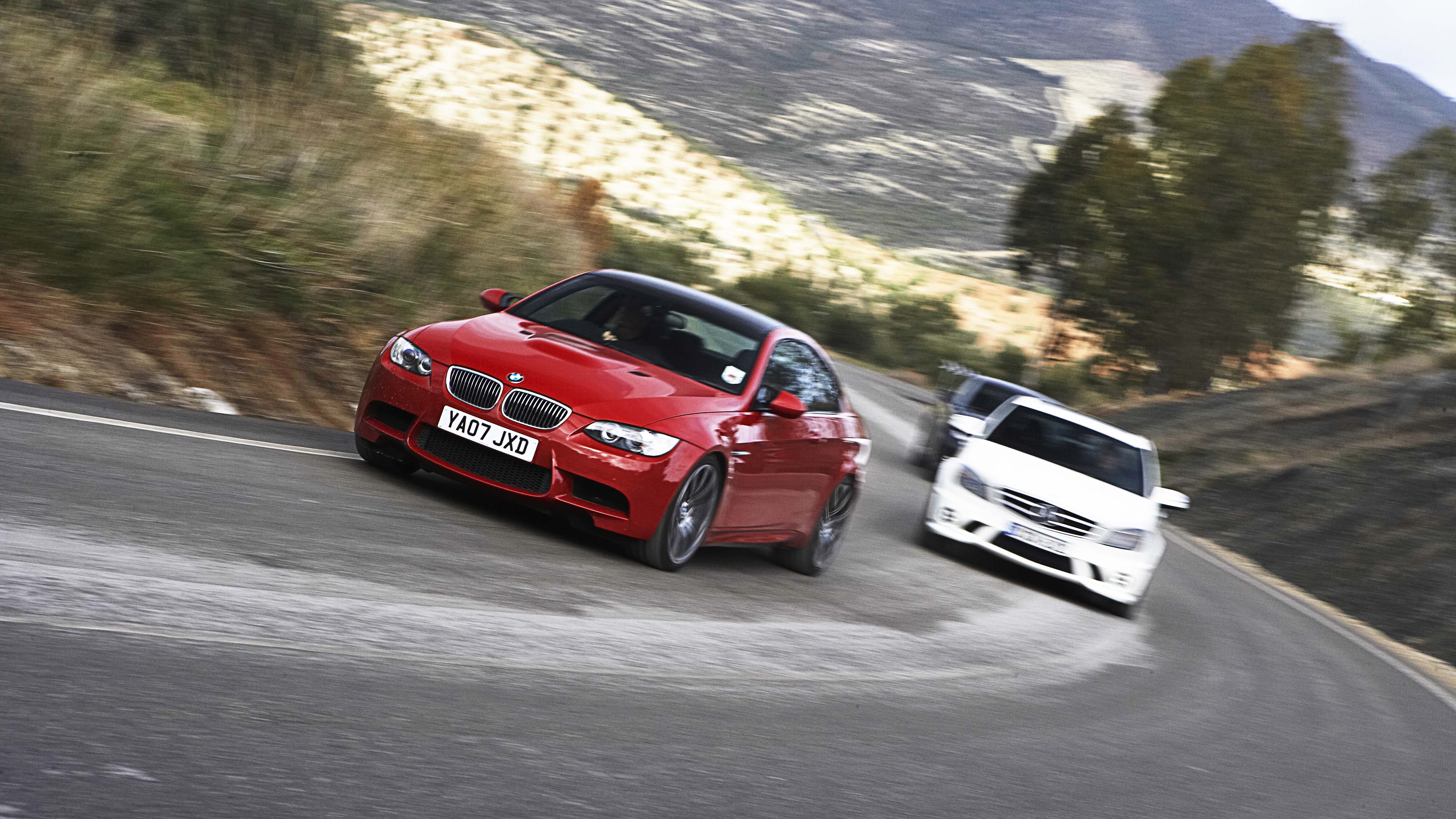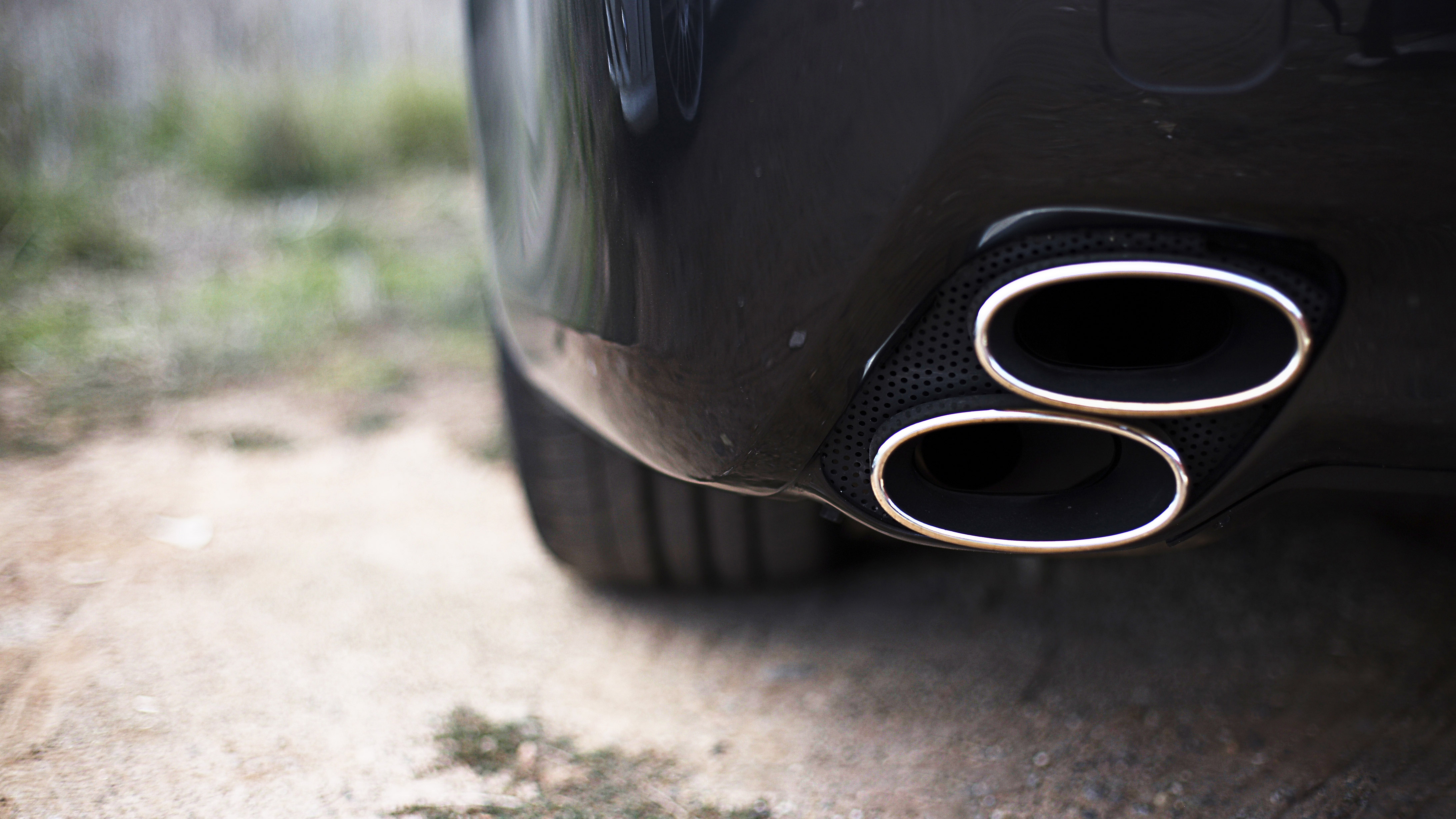
From the archives: the Lexus IS-F vs the Germans
A throwback to 2008, when the Lexus IS-F took on the formidable might of the German thunder saloon pack
Here he is, a gnarled old man at the wheel of a partially fossilised Suzuki SJ410 doing exactly 60kph along a quiet road just outside the Spanish city of Seville. His face is a mass of tan leather engineered by the sun, his bemused frown at the road ahead betraying his failing eyesight, his wandering line betraying his failing steering box. He is not expecting what happens next.
As we round a corner and the road ahead blossoms into a valley-long straight, not an oncoming lorry in sight, I push back my shoulders, pull the left-hand paddle of this Lexus IS-F... and floor it. Everything goes a bit odd, as 417bhp tries to divorce the rear pair of tyres from their comfortable tarmac roost. The Suzuki pings towards the IS-F like its brakes have suddenly jammed on, and the vacuum pipes in the Lexus’s Yamaha-fettled engine reach critical mass at 3,600rpm, open some big noisy valve and replace the cultured low-rev Lexus hum with a thick, dangerous-sounding bellow.
I can’t see his face clearly, but our dear old chap in the SJ jogs the wheel as the IS-F lunges forward, grabs another gear, shimmies slightly as it touches a dusty median and charges off up the valley like an angry lump of pure evil. A Lexus that makes people flinch because it’s so noisy? I like that. I like that a lot. And it gets better. Because as we pull up in a dirty, rocky little lay-by a couple of miles later, a random string of designations is suddenly spelled out in magnificent metallic 3D: IS-F vs M3 vs C63 vs RS4. Hard not to break out that schoolboy grin, really.
There has been naysaying. Doom and gloom has been preached by those who say that the days of high-horsepower profligacy are over, that fast-for-fast’s-sake is like, so 2005. This, I’m pleased to announce, is rubbish. Today, from a Spanish hillside, I can happily report that horsepower is not dead, it’s just grown up a bit and moved to the suburbs. Spiky-haired, bewinged, bottle-wielding fast-car yobbery might have become unfashionable in the face of a media-friendly threat of global death and its Prius-wielding army, but that doesn’t mean to say that the manufacturers have stopped making them. They’ve just made them brush their hair and polish their shoes.
Images: Lee Brimble
This feature was first published in Issue 177 of Top Gear magazine (2008)
It is with that in mind that you realise none of these cars looks particularly Rampton day-release, even though each one is fast enough to make your ears clap around the back of your head. So we get subtle(ish) bonnet bulges, wheel arch flares, larger diameter wheels, bigger exhausts and deeper scoops, but no massive spoilers or visually lurid splitters to give the game away. All have put on lean muscle without falling into the caricature styling trap and ending up with a bodybuilder’s waddle. Out of all four, the Lexus with its black wheels, big arches, engine-bay cooling front wheel arch vents and quadpiggyback exhaust tips is the most aggressive.
The C63 is a good thing, a recognisable thing, but not a neon advert. Those half-submerged torpedo-shaped bulges in the bonnet mark the C-Class’s potential, but really there’s very little anger in it, even though the four exhausts are a little more explicit. The BMW is similarly restrained, and even though we have the coupe version here, there’s something über-normal about it that means while it’s easy to overlook, if you linger, there’s a wealth of gorgeous performance detail to absorb.
As always, the RS4 tucks away in the background, confident, subtle and muscular, wheel arch flares and distinctive wheels complementing the twin-oval exhausts that state the nature of the V8’s business. There isn’t much visual pork on any of the cars, and every single one looks the better for it – Bruce Lee rather than Incredible Hulk. Especially because of the weight of performance they all carry – under fives for the 0-62mph dash and more than 155mph every one, even if they do all have four seats and luggage space for real life, all for early £50k. Those kind of stats put these cars within dreaming distance and make me very happy.
The main event is, of course, the IS-F. And, boy, is it an early adopter’s dream. The 5.0-litre V8 is the same block as in the LS600h, except without the ‘h’ bit and with input from Yamaha to make it more intrusive. Yamaha is famous for two things: bikes and pianos, so tuning is obviously its thing. There are other things going on to wring that 417bhp and 373lb ft of torque out of the block, but suffice to say this is about as far from a Buick 302 as an F1 car is from a bicycle. It’s also mated to a version of the LS’s eight-speed auto, but with an ultra-quick paddleshift.
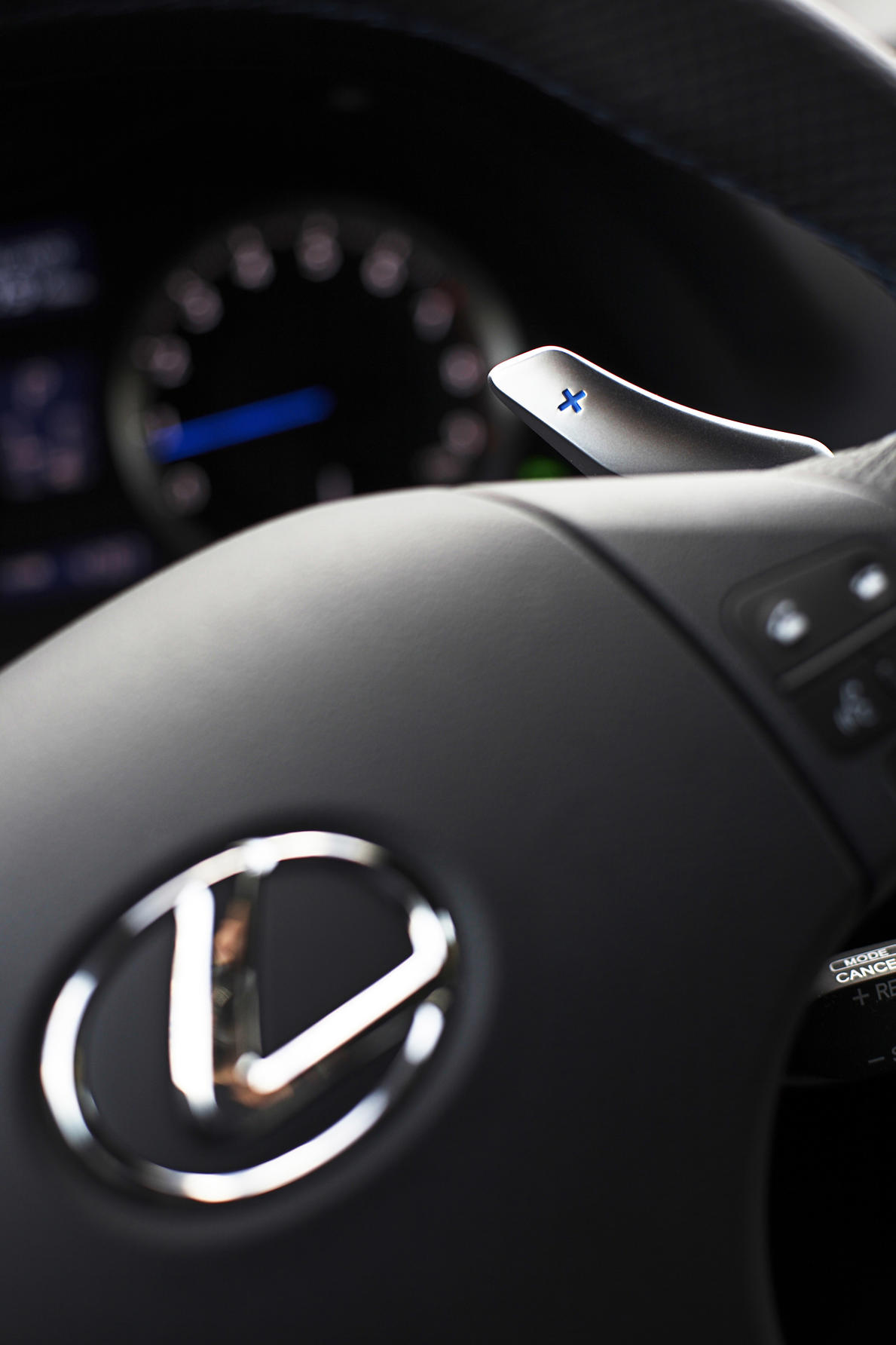
Direct drive gives a shift time of 100 milliseconds, and yet when you pop it back into ‘comfort’, it also has the slushy loveliness of a premium auto. Gently toddle about in ‘D’, and really you’d have very little concept of what the IS-F is really all about. Yup, there’s a neat set of racy, blue-lit dials, some sporty seats and a nicely finished dash, but it doesn’t exactly shout that it’s going to nail your head to the back windscreen when you push the ‘Sport’ button on the right of the steering wheel and progress the righthand pedal past a quarter travel. It rides almost supernaturally well, and it has the defined isolatory vibe and pottering-speed awesomeness of little brother IS250, including steering that is so dead in the middle, I thought my fingers had gone numb.
The Mercedes Benz C63 AMG, on the other hand, sounds simpler in theory, if not in execution. Here’s a huge 457bhp, 6.3-litre V8 with 442lb ft of torque, in a relatively small car, driving the rear wheels through a seven-speed, paddle-override auto with a superaggro shift pattern if you prod and twist the requisite knobs. The steering is pin-sharp and prone to kickback on the broken Spanish tarmac, the seats are deep, hip- and haunch-throttling buckets, and the delivery from that engine is both too much for the rear tyres in most situations and one of the most lifeaffirming bits of machinery I’ve ever encountered.
It’s not an easy car to drive fast, to be honest. You don’t relax with it, or ever calm down enough to get your heart rate down below imminent-heart-attack levels. In fact, the C63 can be especially cruel on these fast, sweeping Spanish roads that often chuck in desperately unsettling craters mid-corner, or a big lump somewhere uncompromising. The C63 is so stiff, that at one point, braking down from a fast straight into a 35mph left, the car hit a bump and I hit the roof. Travelling quickly on a very bumpy, treacherously cambered road like this in a C63 is not for the faint of heart, or the particularly sound of head.
Top Gear
Newsletter
Thank you for subscribing to our newsletter. Look out for your regular round-up of news, reviews and offers in your inbox.
Get all the latest news, reviews and exclusives, direct to your inbox.
The overridden seven-speed auto also feels desperately clunky next to the Lexus, and nowhere near as sweet as either of the manuals. Bizarrely for an auto AMG, this actually feels more like a racing car than any of the others here. Getting it right is harder, because you can’t just jump on the throttle – with the traction control switched on, the little blinky orange light stutters your progress; with it switched off, injudicious throttle-stampings will result in you force-feeding a Merc into a tree. The polar opposite of, say, the grip-tastic four-wheel-driveyness of the RS4. Saying that, there may be a relationship with the necessary tractive forces involved with getting that much horsepower and torque to the road, but heck it can put a smile on your face every time you crack wide that exhaust opera.
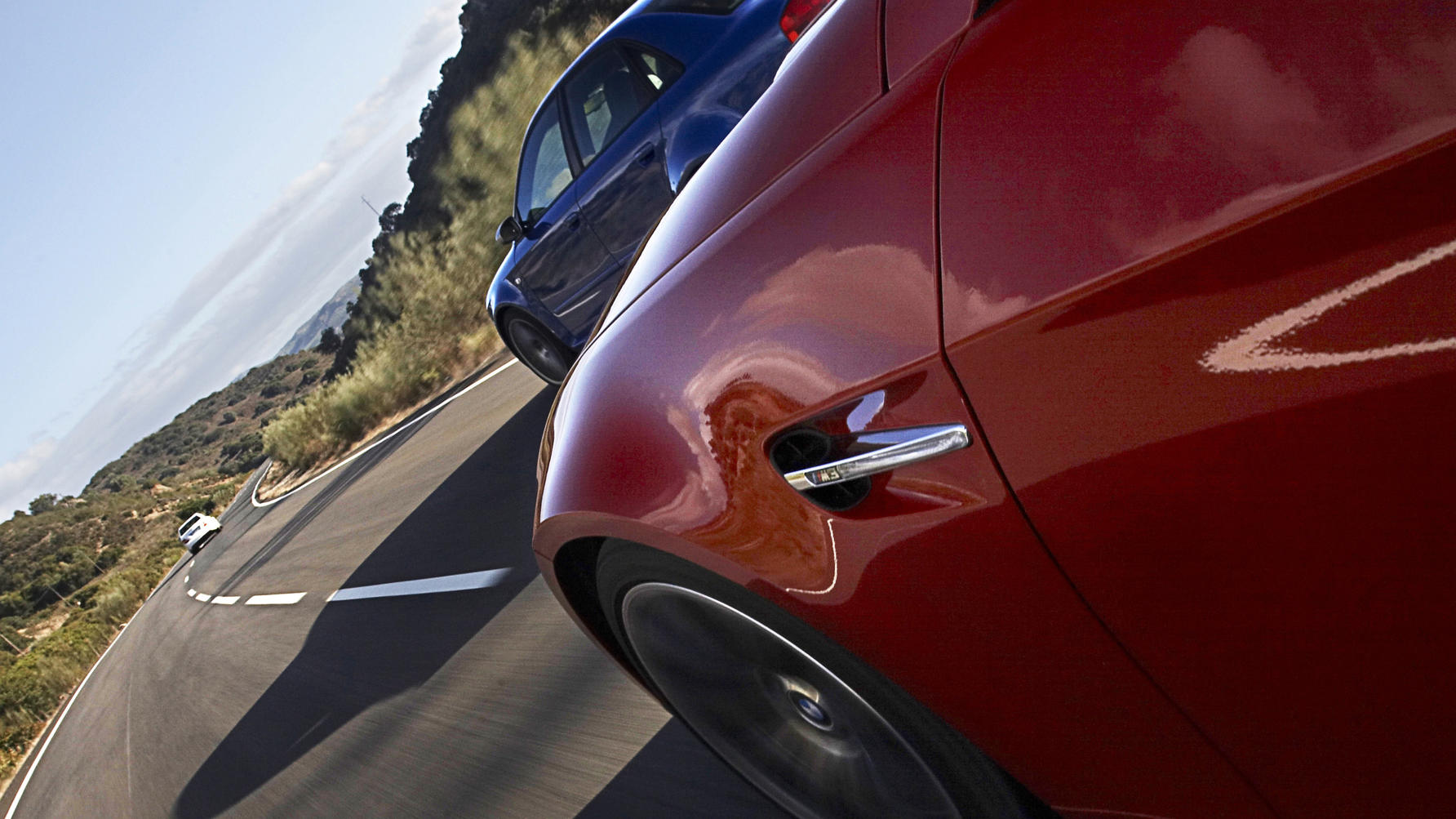
Which brings me neatly to the BMW M3. Here is a car that is perhaps the original sports saloon iconoclast, and about as safe a bet as straight bullion. This is the six-speed manual with 414bhp and a lowly-in-this-company 295lb ft of torque (147lb ft less than the C63) from its 4.0-litre V8. The sacrifice might allow a racy 8,400rpm red line, but sacrifice it is, and you’ll immediately feel that the Beemer is slower, less eager in the lower reaches, even with the ‘power’ button depressed and the EDC set to max.
It only really starts to get angry above 5,500rpm, and when it does, the whole car stops being an amicable dawdler and comes alive. You snatch gears just to get an extra sniff of hydrocarbons burning at 8,400rpm, to have the engine run its fingers up and down your spine. Of all the cars here, it is the one that changes direction with the most fluidity and feel. It also shrinks intimately down around you like warmed-through clingfilm and handles so sweetly that liberties are easy to take without being punished by ritual maiming of the ego. It’s a shame that the interior is so dull, the clutch and gearbox feel a bit fragile and the steering wheel is so thick – there’s so much to like that the bad bits really jar.
And so to the Audi. The RS4 is here as a control, the Petri-dish benchmark for all this new and shiny speed merchandise. It isn’t in total contention because the lack of newly forged ‘old’ A4 bodyshells available with which to RS-ify means it is technically out of production. But in a world of one-trick ponies, the four-wheel-drive RS4 has proved itself time and time again to be one hell of an all-rounder.
It hasn’t got any party tricks either – the recipe of a 414bhp, 311lb ft V8 and Quattro four-wheel-drive is pretty much all you need. There’s a 40/60 torque split front to rear in most situations, with up to 85 per cent thrown at the back axle if things get slippy. There’s also that gorgeous high-revving V8 under the bonnet, but essentially the RS4 deals a straight deck; it is a phenomenally fast Quattro, and the first of a generation of Audis that delivers on the driving experience as well as the paper statistics. This is also one of the few cars that stands up to fond memory, every nuance still replicated in sensitive Technicolor, even through the cotton-wool of such a hefty drivetrain. I loved this car when it was launched.
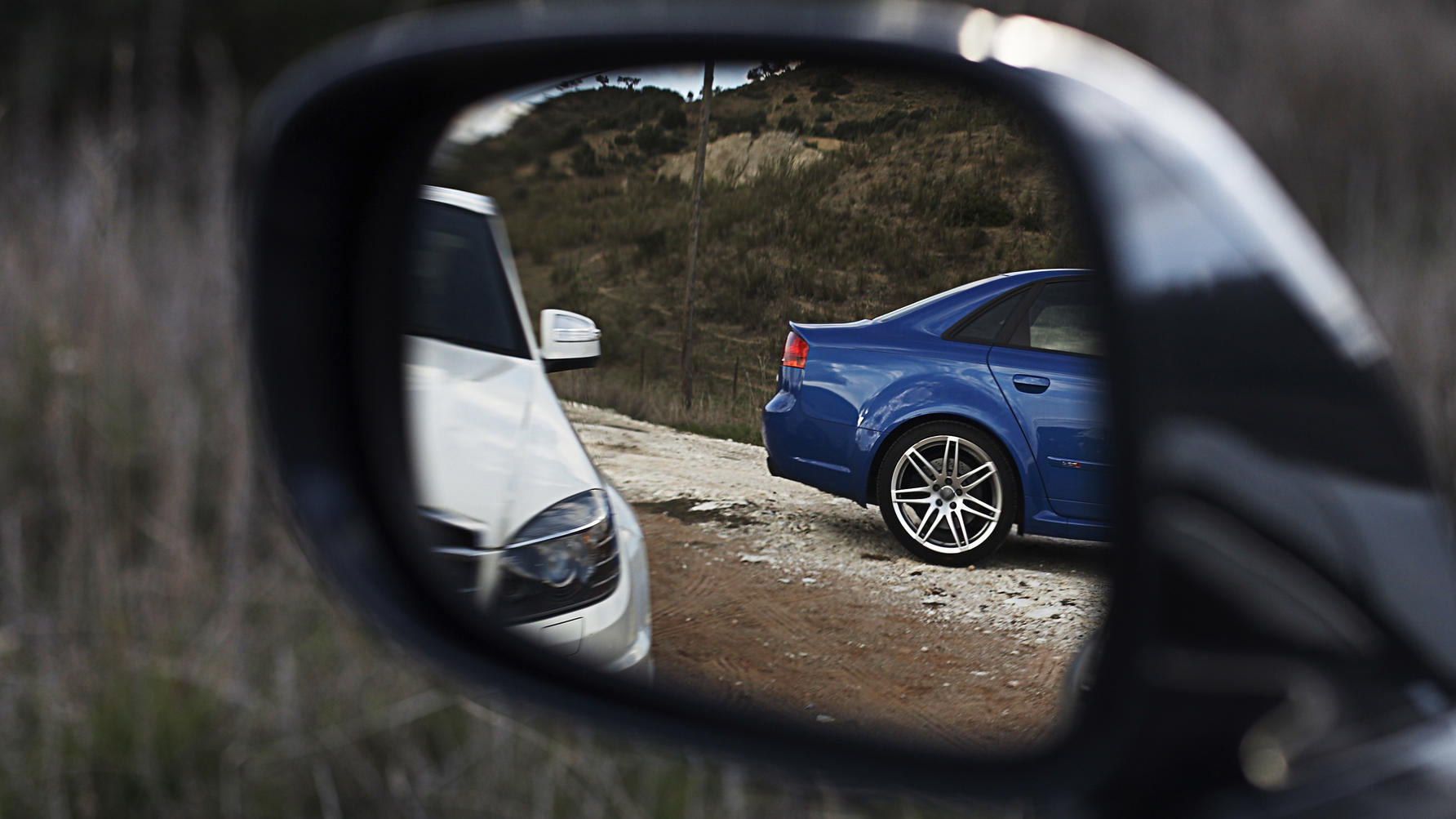
It hasn’t changed. Constant throttle and feeding in the power on the apex is the key. It understeers if you get over-excited, but tucks up without histrionics if you do overstep the mark. It feels torquier than the BMW, less so than the Merc or the IS-F. In the wet it’ll also do a bit of lift-off oversteer, or undramatic but fun four-wheel drifts. It’s not the joyful power-oversteer of the other three cars here, which is a little disappointing, but I reckon that 95 per cent of the time, you’ll be more than happy with Quattro. As an everyday performance car, the RS4 is a living legend.
And as soon as we’ve been tooling around for a few hours of mixed driving, it becomes obvious that there isn’t a duff car here. There are, however, four cars that deliver on exactly the same design brief in totally different ways. Each car brings an almost unrecognisable experience, as if each saloon were designed for a different bespoke customer.
The way these cars operate and handle makes you want to Frankenstein the ultimate super-saloon from various bits because, though all are brilliant, none is perfect. The Lexus has one of the most astonishing drivetrains of its generation – lightning quick and bizarrely competent. It rides like a limo, can cope with the day-to-day more comfortably than anything else here and (I think) looks fantastic. But it isn’t without its faults: it bongs and dings and twitters at every little thing. The exhaust tips don’t actually connect to the exhausts themselves – which you can see clearly if you follow the car at night. Lexus says this is to disperse heat at the back bumper area, but it’s a bit of visual fakery that, whatever the reason, cheapens the car. The steering is so wrong for Europe that it makes me want to scream. It can be a hooligan, but the edginess has been worn away by relentless perfection. I like a bit of edge in fast cars, it makes them more human.
Everyone emerges from the C63 sporting a slight sheen of sweat and a look of relief. This really is an amazing car from Mercedes, which has raised its game to the point where you don’t have to make excuses for a big AMG. This thing has character in everything it does. If it rode better and had the Lexus’s gearbox and BMW’s steering, I’d be in love. But it doesn’t, so I’m not. Not entirely, anyway.
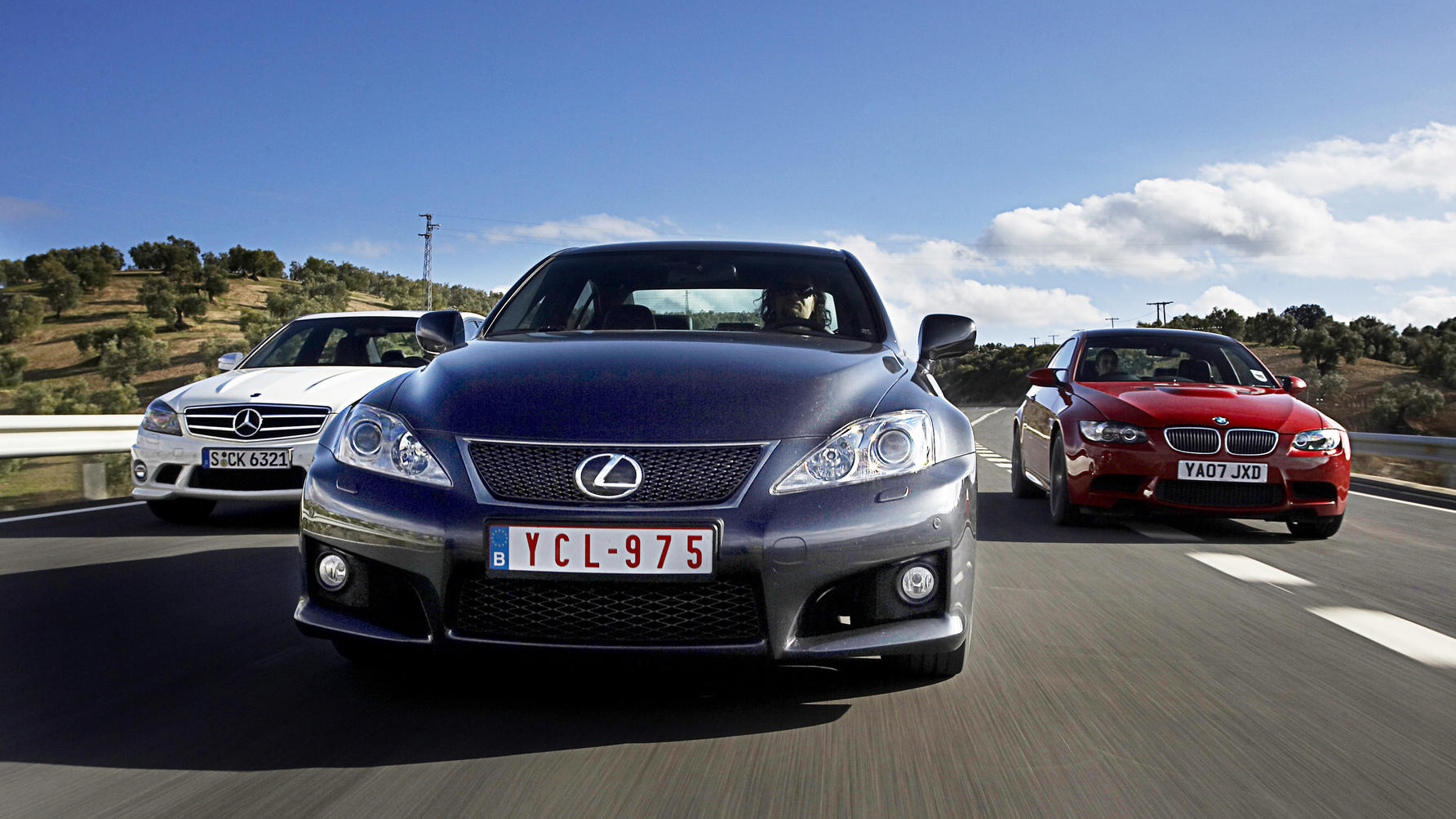
Of course, the RS4 is probably the most sensible, but it’s also the easiest to access. Never has a car been this much fun and been so safe, or so fast. Where the Merc wants to bite your face off, and the Lexus is a bit disinterested, the RS4 walks a magic tight-rope. But you can’t play so easily as with the RWD cars, and in these perfect few hours, its been a small but important thread that’s been missing for the RS.
Which leaves the BMW. It’s not the most hardcore of the cars here, nor the fastest. It’s got a dull interior and an almost anaemic lack of torque. But it is inspiring. Happy to go fast, happy to go slow, easy to play with, surprisingly satisfying in attack mode. The balance and poise and steering is what attracts you to it, and the longer you spend, the more you come to appreciate the true breadth of its talent. So who wins?
Well, after much deliberation, endless circular conversation and several pints of strong cider, the answer is: nobody. There is no ‘best’ in this group. I’ve tried to isolate a winner, but it just can’t be done. Each has strengths and weaknesses, some that you’d be prepared to live with more than others, but they’re not necessarily deal-breakers. For me, it goes like this: I want a C63 to play with, because it makes me feel like a 17-year-old, but it’d tire me out if I drove it everyday. I want an RS4 day-to-day, but think I’d hanker after something more throttle-adjustable now and again. The M3 is the best all-rounder, but I’m not really into the M3 image and ubiquity. So there’s the Lexus. Brilliant, exciting, slightly mad Lexus. It’s flawed. It’s not for the hardcore among us. But for some reason I’m drawn to it. Drawn to the technology, drawn to the fact there’ll only be 150 in the UK per year. Drawn to its oddness.
So, for once, I’ll leave the choice of what to take to you. Last one back to the UK isn’t trying hard enough.
Trending this week
- Car Review
BMW iX3







